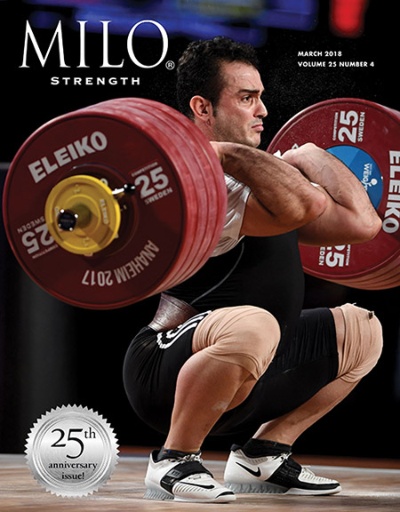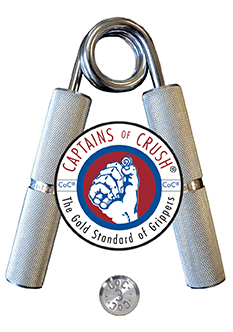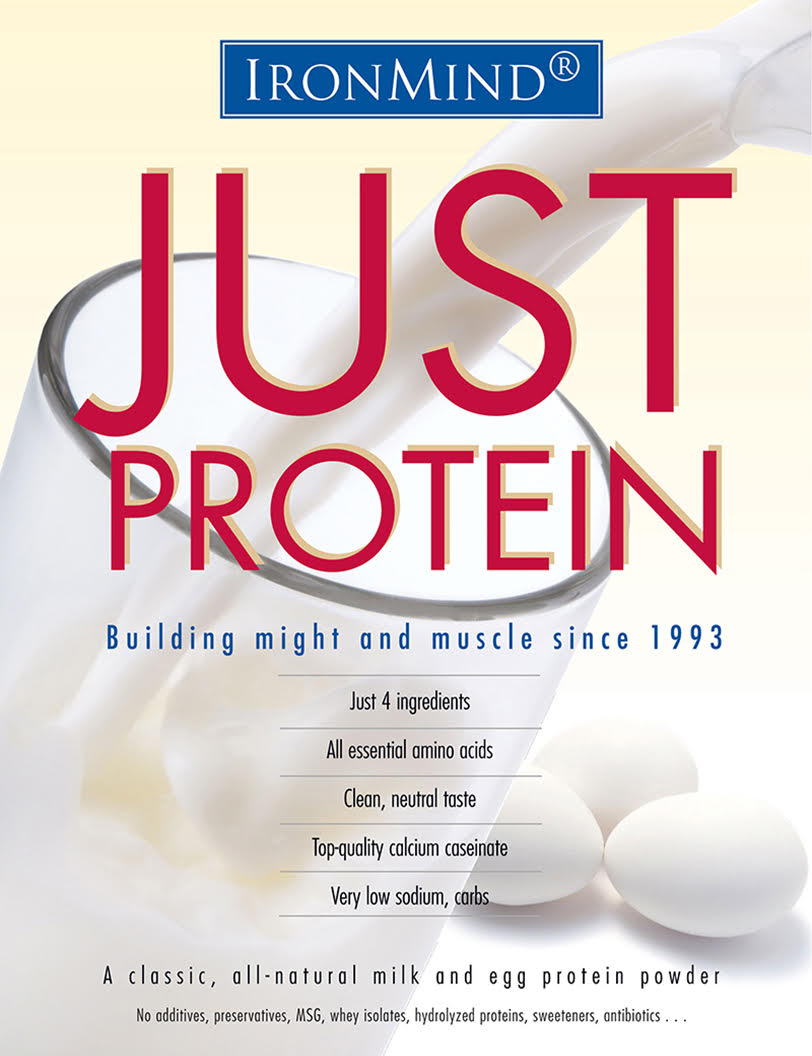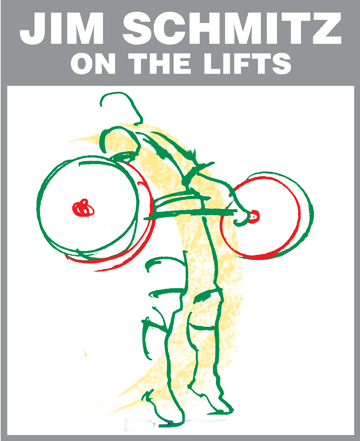
U.S. Olympic Weightlifting Team Coach 1980, 1988 & 1992 Author of Olympic-style Weightlifting for Beginner & Intermediate Weightlifters Manual and DVD
The Olympic lift that is most popular and widely used by strength coaches, the National Strength and Conditioning Association, and Bigger Faster Stronger is the power clean. I previously discussed the problem of jumping the feet too wide in the power clean and power snatch. Now I would like to talk about the correct hip and elbow positions. Just as a beginner or inexperienced weightlifter will jump his feet too wide, he will also have his elbows down and hips under his torso. This is not correct. You want your elbows in front of you and up slightly, and your hips behind you and in a quarter squat. It sounds easy, but for some it is very difficult.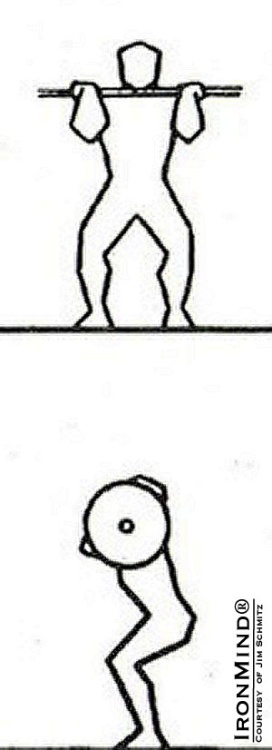 The correct power clean catch position with elbows in front and slightly up and hips behind and in a quarter squat position. IronMind® | Courtesy of Jim Schmitz.
The correct power clean catch position with elbows in front and slightly up and hips behind and in a quarter squat position. IronMind® | Courtesy of Jim Schmitz.
Again, I teach the correct receiving position for the power clean by starting from the hang position with the bar at about mid-thigh, legs bent, feet flat, arms straight, back flat, and eyes looking straight ahead. Pull up the barbell by extending your hips, knees, and ankles, and shrugging your shoulders; then pull up with your arms so the bar is about to your rib cage. Pull yourself under the bar, turning over your wrists and elbows at the same time as the bar lands across the clavicles and deltoids and go into a quarter squat, with your hips behind you as if you were going to sit in a chair. At the same time, your elbows shoot out in front of you. There will be a slight forward lean to your torso, but the bar will be directly over the ankles. All of this must happen very fast and explosively.
Most beginners can't do this in their first workout; they want to pull up the bar and catch it below their clavicles with their knees straight and almost do a reverse curl with the bar—in other words, a stand up with a reverse curl. When a lifter does that, I of course tell him and show him what he did wrong. I have him do it again and then I have him go into the quarter squat receiving position with his hips behind, not under, his torso, and with his elbows up and out in front of him. I have him hold this position for 3 seconds or so, so that he gets the feel for this position. Then I have him do another rep and see if he can get to that position on his own and again hold it for 3 seconds before standing up. I have him hold that quarter squat position for 3 seconds or so because another flaw is standing up too soon and too quickly. Some lifters have to go to the correct receiving position and hold it for 3 or so seconds with every rep until they get it. It might take a few reps or several workouts.
Many lifters have difficulty getting their elbows around fast enough. They may get the quarter squat receiving position okay, but their elbows turn over slowly and therefore they catch the bar with their elbows down. I use a technique I learned from the great New England coach Joe Mills—it's called "breaking the stick." I tell them to imagine breaking a stick at about chest height—that is, with an imaginary stick held right about at your chest, simulate breaking it in half. Your hands and wrists will turn over and your elbows will rotate around in front. However, don't try this with an actual stick. One of my lifters, Molly Blum-Gutierrez, did and when the stick broke, it jammed her in the face, scratching her cheeks and just missing her eyes!
Once lifters get the proper receiving position down, I have them start from the knees. When they have mastered that, I have them start from the shins, and then from the platform. When they can power clean from the platform, I like to have them do one rep from the thighs, one from the knees, and then one from the platform. It might take one workout or weeks of workouts, but in time you will become proficient in the power clean, where your feet jump out just to shoulder width and you catch or receive the bar on your clavicles and deltoids with your elbows out in front of you and your hips behind you in a quarter squat.
This brings up the issue of when is a power clean not a power clean. My definition of a power clean is where the thighs and calves are at about a 45-degree angle. In the 1960s and 1970s the San Jose YMCA had many really strong men training there—Pete Cline, John and Jerry Orlando, Ray Leso, Blair Kephart, Richard Marks, and Al Feuerbach—and they were power clean obsessed, but they called any lift with the thighs parallel or higher a power clean. I didn't agree, as my standard is 45 degrees, so I call a lift just above parallel or lower a "San Jose power clean," which is good, but not good enough.
In 1993, I was at the International Weightlifting Federation's coaching symposium in Olympia, Greece. I was discussing the power snatch and power clean and many of the international attendees didn't understand, even though it was being translated to their respective languages. I demonstrated the lift and they all went "Oh, a high snatch and a high clean," because you catch it high, 45 degrees or higher! However, power clean and power snatch are now understood around the world. Finally, I will close with "A missed power clean is a squat clean"—and that is what should happen if you have good technique.








